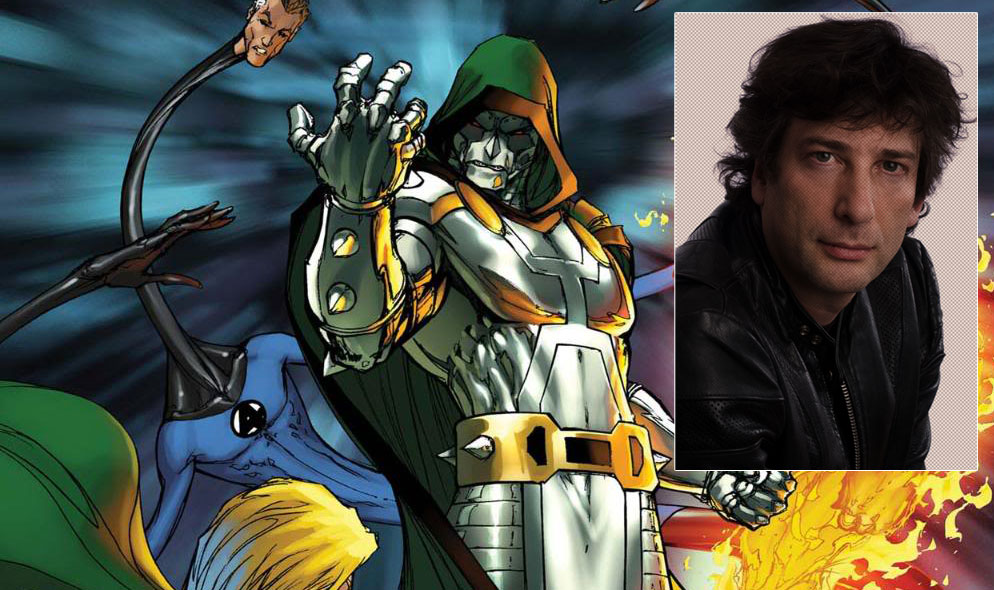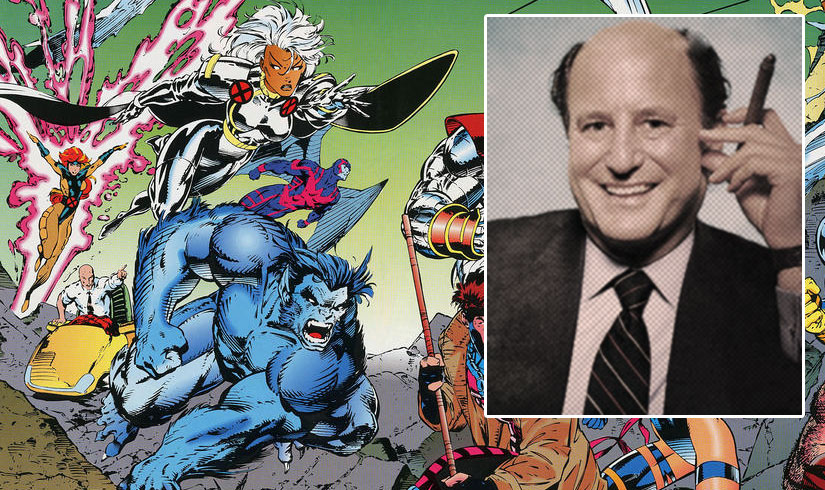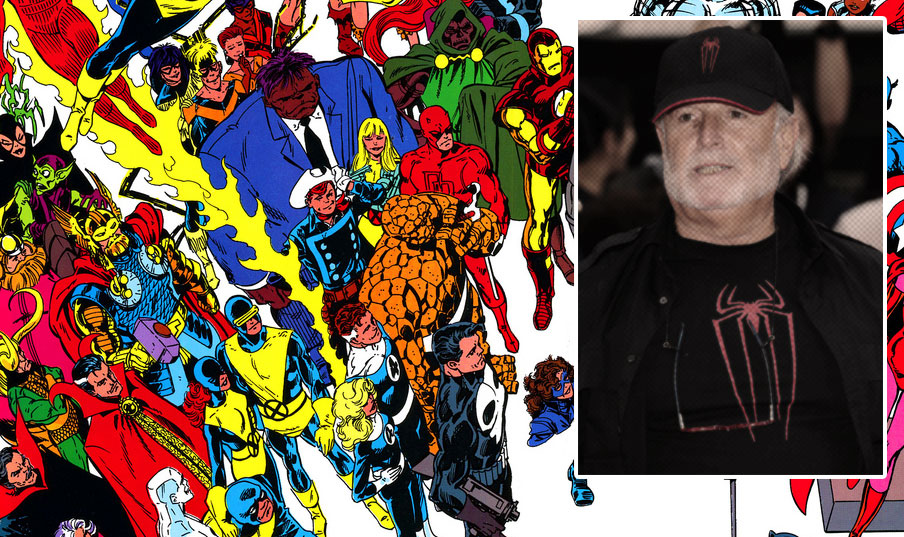Marvel Herosis Thereapoint to Doing Story Again

Just about every great comic book story has a darkest hour moment: a point in the tale where all seems lost. The heroes are on their knees, the city's a smoldering ruin and the villains are closing in for the kill. For Marvel, its darkest hour came in the winter of 1996.
A company that had grown in stature throughout the '60s, '70s, and '80s thanks to the often stunning art and storytelling in such comics as Fantastic Four and The Amazing Spider-Man, Marvel's financial success had reached a peak by the early '90s. But then a series of bursting financial bubbles and questionable business deals saw Marvel's stock value collapse; shares once worth $35.75 each in 1993 had sunk to $2.375 three years later. An ugly fight between a group of very rich investors followed, and for a while, the company's future seemed uncertain.
Yet somehow, Marvel fought through all the corporate intrigue which dogged the company in late 1996 and for many long months afterwards, and emerged from the rubble a decade later as a film industry behemoth.

A prophecy of doom
In 1993, while Marvel and the comics industry as a whole seemed to be in rude health, Sandman writer Neil Gaiman stood before about 3,000 retailers and gave a speech which few in attendance wanted to hear.
In it, he argued that the success of the comic book market was a bubble – one brought on by encouraging collectors to buy multiple editions and hoard them up in the hope that they'll one day be worth a fortune. This, Gaiman said, was akin to tulip mania – a strange period in the 17th century when the value of tulip bulbs suddenly exploded, only for the market to collapse again.
"You can sell lots of comics to the same person, especially if you tell them that you are investing money for high guaranteed returns," Gaiman said. "But you're selling bubbles and tulips, and one day the bubble will burst, and the tulips will rot in the warehouse."
The bubble Gaiman described had begun several years earlier, when comic books, once considered disposable items by parents, were becoming prized items by collectors who'd grown up with their favorite superheroes as kids. By the 1980s, comic book collecting had gained the interest of the mainstream media, which latched onto stories about Golden Age comics selling for thousands of dollars.
Publishers were themselves courting the collector market by introducing variant covers, sometimes with foil embossing or other eye-catching, fancy printing techniques. These were snapped up hungrily by readers, but also by speculators assuming that they'd stumbled on a sure-fire means of making money by storing copies up and selling them for a profit in the future.

Enter Ron Perelman
While the comics were flying off the shelves, Marvel attracted the interest of a man named Ron Perelman. Often pictured with a broad grin and a huge cigar in his hand, Perelman was a millionaire businessman with a variety of interests: in 1985, he'd made a huge deal for cosmetic firm, Revlon through his holding company, MacAndrews & Forbes. In early 1989, Perelman spent $82.5 million on purchasing the Marvel Entertainment Group, then owned by New World Pictures.
Within two years, Marvel was on the stock market, and Perelman went on a spending spree: he bought shares in a company called ToyBiz, snapped up a couple of trading card companies, Panini stickers, and a distribution outfit, Heroes World. All told, those acquisitions cost Marvel a reported $700 million.
Through the early '90s, Marvel was buoyed by the success of Spider-Man and X-Men, which were selling in huge numbers. Sales of a new comic, X-Force, were similarly huge, thanks in part to a cunning sales gimmick: the first issue came in a polybag with one of five different trading cards inside it. If collectors wanted to get hold of all five cards, they – you guessed it – had to buy multiple copies of the same comic. With the boom still in full swing, that's exactly what collectors did – as former Comics International news editor Phil Hall recalls, fans were buying five copies to keep pristine and unopened, and a sixth to tear into and read.
Then, just as Gaiman predicted, the bubble burst. Between 1993 and 1996, revenues from comics and trading cards began to collapse. Suddenly, Marvel, which at one point seemed invincible as it grew in size, now looked vulnerable.
"When the business turned," observed then-chariman and CEO of Marvel Scott Sassa, "it was like everything that could go wrong did go wrong."
Some in the industry went further, and argued that Perelman's tactics had endangered the entire industry:
"[Perelman] reasoned, quite correctly, that if he raised prices and output, that hardcore Marvel fans would devote a larger and larger portion of their disposable income toward buying comics," wrote Chuck Rozanski, CEO of Mile High Comics. "Once he had enough sales numbers in place to prove this hypothesis, he then took Marvel public, selling 40% of its stock for vastly more than he paid for the entire company. The flaw in his plan, however, was that he promised investors in Marvel even further brand extensions, and more price increases. That this plan was clearly impossible became evident to most comics retailers early in 1993, as more and more fans simply quit collecting due to the high cost, and amid a widespread perception of declining quality in Marvel comics."
[related article: Complete Marvel Movie Release Calendar]
Whether Perelman was directly to blame or not, the consequences for the industry as a whole were painful in the extreme. Hundreds of comic book retailers went bust as sales tumbled by 70 percent. Suddenly, the boom had turned to bust, and even Perelman admitted that he hadn't anticipated the dark future Gaiman had warned about in his speech.
"We couldn't get a handle on how much of the market was driven by speculators," Perelman said; "the people buying 20 copies and reading one and keeping 19 for their nest egg…"

A battle in the boardroom
By 1995, Marvel Entertainment was heavily in debt. In the face of mounting losses, Perelman decided to press on into new territory: he set up Marvel Studios, a venture which he hoped would finally get the company's most famous characters on the big screen after years of legal disputes. To do this, he planned to buy the remaining shares in ToyBiz and merge it with Marvel, creating a single, stronger entity.
Marvel's shareholders resisted, arguing that the financial damage to Marvel's share prices would be too great. Perelman's response was to file for bankruptcy, thus giving him the power to reorganize Marvel without the stockholder's consent.
There followed a bewildering power struggle which raged for almost two years. A stockholder named Carl Icahn tried to oppose Perelman, and the financial press eagerly reported on the very public spat which ensued. Perelman, Icahn argued, "Was like a plumber you loan money to get him started in business; then he comes in, wrecks your house, then tells you he wants the house for nothing."
The battle, when it finally ended in December 1998, had a strange outcome which few could have predicted: after a lengthy court case, ToyBiz and Marvel Entertainment Group were finally merged, but Perelman and his nemesis Icahn were both ousted in the process. Other executives with ties with Perlmutter were also severed, including CEO Scott Sassa, whose tenure had, all told, lasted just eight months.
They'd been pushed out by two ToyBiz executives who'd been on Marvel's board since 1993: Isaac Perlmutter and Avi Arad. With Scott Sassa gone, they installed the 55-year-old Joseph Calamari, who'd been at the helm of Marvel in the 80s, as its new CEO.
With the financial intrigue in the boardroom settling down, Marvel began to turn its attention to a target it had been trying to hit since the 1980s: the movie business.

Marvel on the big screen
Israeli-born Avi Arad brought a gruff swagger to the toy industry. Having risen to the rank of CEO at ToyBiz, and described as "the hottest developer in the toy business" by one contemporary, Arad's big career change came when Marvel bought a 46 percent share in the company in 1993. Arad had received a 10 percent share as part of the deal, and while he initially oversaw the production of Marvel action figures at ToyBiz, he quickly replaced the legendary Stan Lee as the head of Marvel Films.
Arad served as executive producer on the hit animated TV series X-Men, and by the summer of 1993, had brokered a deal with 20th Century Fox to make an X-Men movie.
For years, Marvel had struggled to get its properties onto the big screen: the rights to Spider-Man were stuck in a tangled web which wouldn't be unpicked until the late '90s, while 1986's Howard The Duck was a critical and financial disaster. But now, it looked as though Arad's approach was going to bear fruit.
Then Marvel's financial woes began, and Arad struggled to convince Hollywood executives of the company's cinematic value. "It was literally a daily fight, trying to open people's eyes to what was right in front of them," he later said.
Things began to change in the late '90s, when Marvel began to find its feet again: Blade was a hit, and X-Men began to finally move ahead at Fox. The pickings for Marvel, however, were slim: Blade made $70 million at the box office, but the reward for Marvel, according to a Slate article, was a measly $25,000. The X-Men and Spider-Man movies were huge hits, but Marvel only saw a small percentage of the profits. "We were giving away the best part of our business," Arad mourned.

The birth of a cinematic universe
In 2003, a talent agent named David Maisel came to Marvel's Isaac Perlmutter with a proposal. Why not produce the movies under your own banner, and reap the profits for yourself? And if you're producing your own movies, why can't the stories cross over with each other, just like they do in the comics?
It was an idea that could, in theory, be worth untold millions: while Marvel's stock had bounced back since 1996, Maisel argued that going into movie production could see it soar still further. The problem, however, would be convincing Marvel's board of directors and, just as vitally, gaining the requisite financing.
A major breakthrough came in 2005, when Marvel managed to make a deal with Merrill Lynch. The details of the deal sounded risky: Marvel was essentially offering up the jewels of its business – characters like Thor and Captain America – as collateral. If the films didn't make money, those superheroes would suddenly belong to the bank.
Nevertheless, Merrill Lynch gave Marvel access to a huge reservoir of cash: $525 million over seven years, which it could use to spend on 10 movies with budgets ranging from $45m to $180m. With their newfound clout, Marvel managed to reacquire the rights to characters it had sold over the years, including Iron Man, Black Widow, Thor, and Hulk.
Shortly after the deal with Merill Lynch went through, Marvel announced that Iron Man would be its first independent production. Finally, a character who'd languished in development hell since the 1990s (Universal originally owned the rights, before they passed to Fox and then New Line) was finally getting a shot at big-screen stardom.
While work on Iron Man began, Marvel made another important acquisition – one as important to its future success, perhaps, as the recovery of some of its most famous superheroes.

A president and a $4 billion deal
Kevin Feige got his start in the film business as an assistant to producer Lauren Shuler Donner (wife of director Richard). Feige's love of comics was such that, despite his relatively young age, he landed the role of producer on Fox's production of X-Men – he was just 27 at the time. Going on to produce other Marvel films thereafter – including Spider-Man, Daredevil, and Hulk – Feige was brought in as president of Marvel Studios in 2007. Under his watch, Marvel continued to blossom; Iron Man , his first credit as producer for the studio, made $585 million, kick starting a cinematic universe that is still only just unfolding.
The next turning point came in 2009, when Disney purchased Marvel for a dizzying $4.3 billion Avi Arad insisted, with his usual bluster, that Disney had netted itself a bargain. "It's a cheap price!" Arad said. "It's nothing! It's a very strong brand, and we planned on this brand. It wasn't a fluke."
Marvel's track record over the past near-decade seems to bear Arad out: The Avengers alone made billions, and currently ranks as the third highest grossing film of all time. Iron Man 3 became the second Marvel film to gross more than $1 billion. Even a quirky film like Guardians Of The Galaxy – a space opera some regarded as a gamble – made more than $750 million. Black Panther has become not only another $1 billion plus success story, but one of the highest grossing films of all time.
For a company that was in debt 20 years ago, Marvel has seen a remarkable change in fortunes. Superhero-like, Marvel survived its darkest hour in 1996, and from the jaws of defeat, pulled a multi-billion dollar victory.
Source: https://www.denofgeek.com/movies/how-marvel-went-from-bankruptcy-to-billions/

0 Response to "Marvel Herosis Thereapoint to Doing Story Again"
Post a Comment